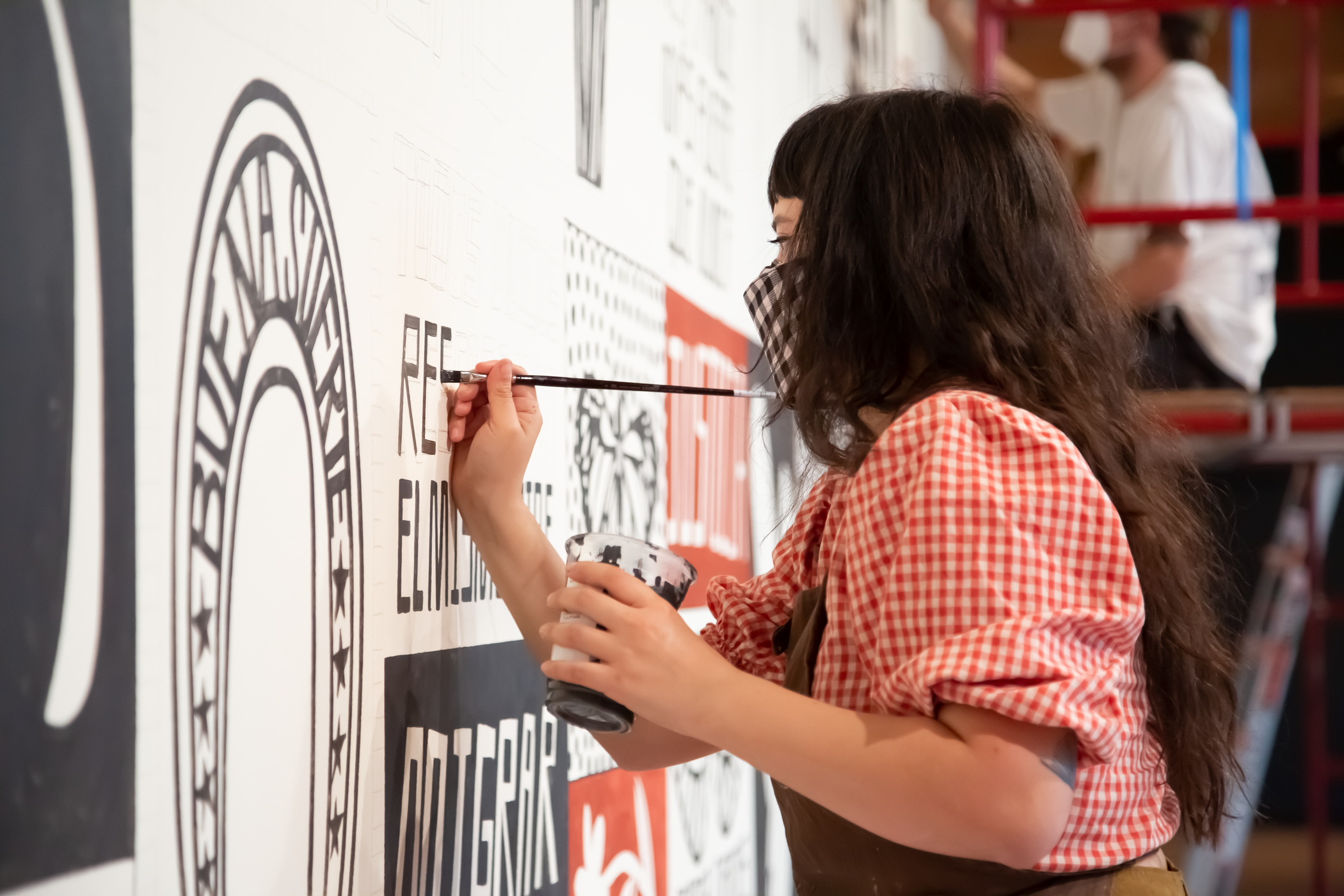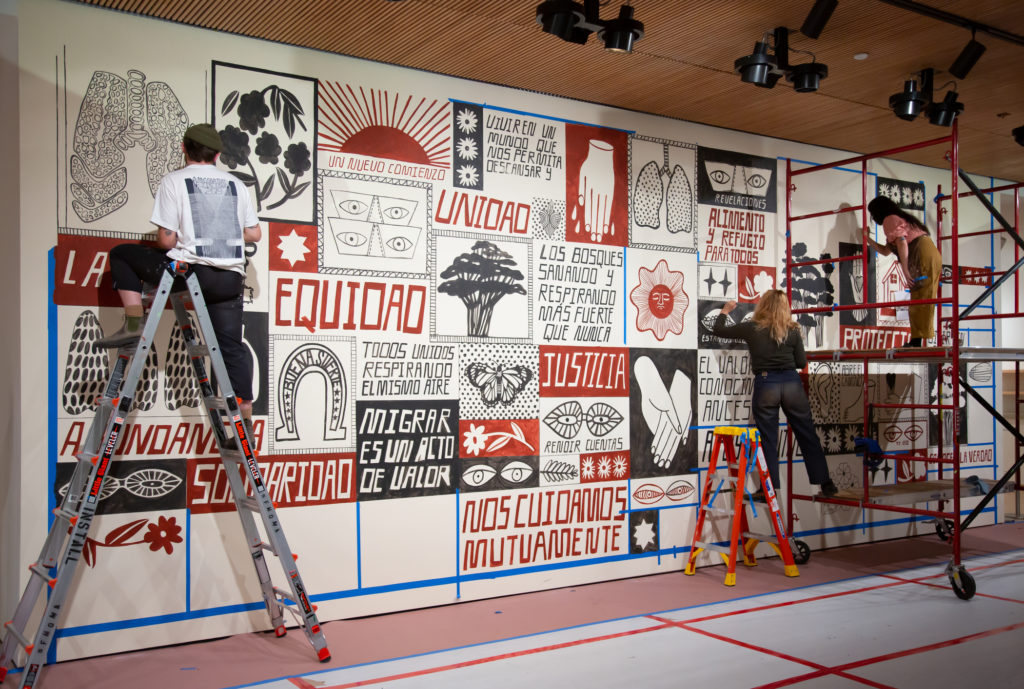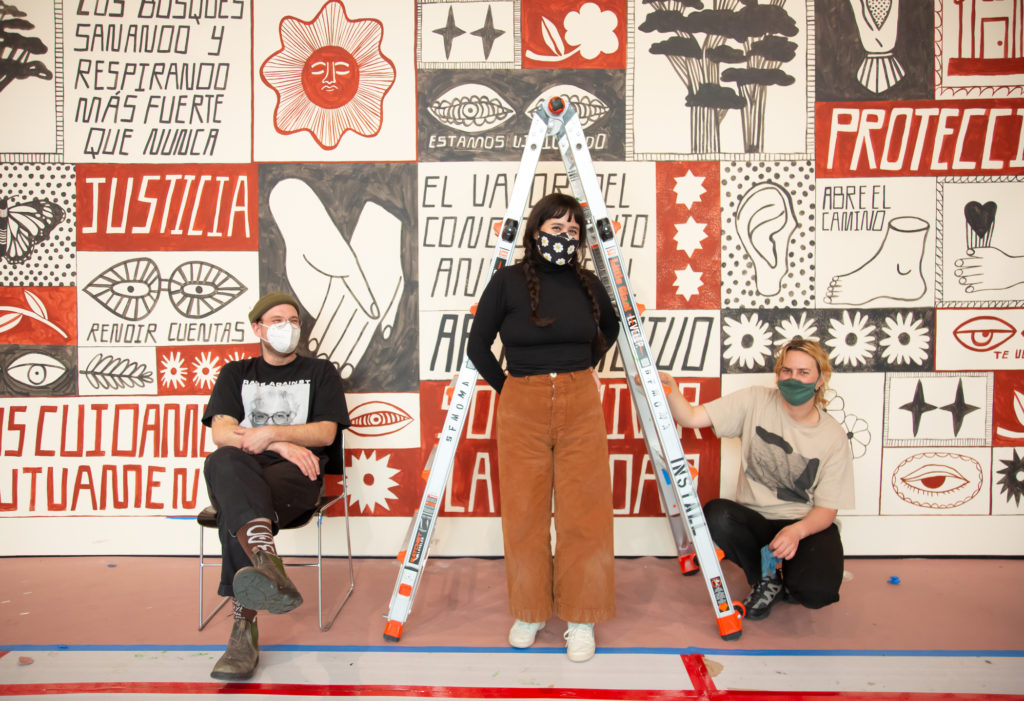•Published January 28, 2021•
Liz Hernández gravitates toward quiet spaces when she works. “For focused thinking, I need white noise or even silence,” says the Oakland-based artist. “My must-haves are natural light, comfortable clothes that can get dirty, coffee, and lots of water.”
A relaxed atmosphere helps the twenty-eight-year-old create ceramics, paintings, and, most recently, murals. It’s an artistic transition she didn’t anticipate. At nineteen, she moved from Mexico City to study product design at California College of the Arts but later took up painting as an outlet for her homesickness. With encouragement from Hernández’s partner, the hobby morphed into a professional practice deeply informed by memories of her upbringing. Vibrant food, visions of old churches, buildings adorned with handmade signs, her grandmother’s house in Mexico — imagery from all of it finds a way into her work. “I want to remember the knowledge my grandmother gave me, and how life was in Mexico City,” she says, “because every time I go back, it’s not what it was when I was there.”

Liz Hernández paints her mural, titled Conjuro para la sanación de nuestro futuro (A spell for the healing of our future) on the museum’s Floor 3, December 1, 2020. Photo: Katherine Du Tiel
Commissioned as part of the Bay Area Walls exhibition, Hernández’s mural at the museum is a testament to her grandmother’s teachings and a prayer for community health. The work — titled Conjuro para la sanación de nuestro futuro (A spell for the healing of our future) — will be located on the Floor 3 landing when the museum reopens. Its earthy red, white, and black color palette recalls the clay pigments of her ceramics, while symbols and texts evoke the summer of the mural’s inception. Lungs reference the COVID-19 pandemic and fiery smoke that filled the air. Eyes seek truth and are witness to violence and injustice against communities of color. Husks of corn symbolize abundance and the need for community sustenance. Bold text declares “alimento y refugio para todos,” translating to “food and shelter for all.”
To Hernández, these and other embedded icons reappropriate Catholic milagros, miracle charms devotees place on saints’ robes or shrines for healing, protection, and wish fulfillment. The artist attended parochial school growing up but now rejects Catholicism’s rigidity. Instead, she connects to spirituality through healing rituals like limpias (cleanses), egg readings, and metaphysical communication — practices influenced by Indigenous traditions of the Americas, Africa, and Asia. She learned them from her grandmother and the older women who led the iglesia popular (people’s church) in Mexico.
“I am a person who doesn’t have a conventional religious faith but is spiritual and a believer of certain rites,” says the artist. “I wanted to put them all together and make this big offering to a higher power. It could be whatever that is for you: it could be God, or it could just be to the universe.”
When the museum reopens, Hernández wants people to see the mural and feel optimistic and less isolated — especially if they’ve felt alone after months of shelter in place. “I hope they find a symbol or a sentence that really gives them comfort and hope,” she says. “I want people to feel powerful.”

